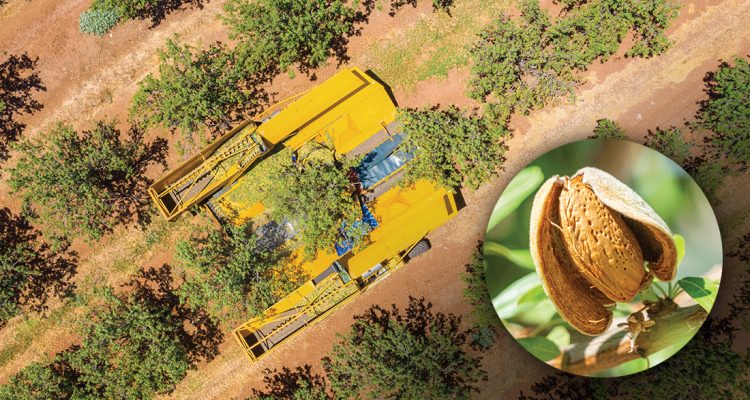It can be a nutty time of year for those in the almond business, with harvest taking place between February and April in Australia. But as Russell Randal, Motion’s National Business Development Manager for Agriculture says, “Farming is an all year job, whether it’s spraying or pruning, agriculture doesn’t stop – but harvest is generally more intensive on machinery, which is why Motion works closely with farming communities to plan for what they need to perform adequate maintenance and keep their equipment in uptime.”
The almond harvesting process involves three main steps: shaking, sweeping and harvesting. In the first instance, a shaker machine enters the orchard, and makes the rounds with each and every almond tree.
“What these shaker machines do is that they fasten onto the trunk with a clawed type jaw and shake the almonds off the tree so they can be swept up and harvested – that’s the purpose of the machine,” explains Bryden Coote, Motion’s Branch Manager at Swan Hill, Victoria. “To do their job effectively, whilst not inflicting damage on the tree, the shakers need to be kept in good maintenance and we recommend using quality componentry such as heavy-duty Gates® v-belts on the shaker heads.”
According to Bryden, many OEMs exclusively use the Gates® Super HC™ PowerBand™ v-belts on their shaker heads.
“There are certain brands where the Gates® belts come with the machine as they are specifically suited to these applications, and as partner to Gates® in Australia, Motion supplies these belts when they need replacing on the shaker heads,” says Bryden. “These belts, which include the 8V1600, 8V1800 and 8V2000, are especially reliable on these machines because they’re strong but narrow, basically combining the strength of a wrapped belt with the economy of a narrow section v-belt.”
Once shaken, almonds are typically left to bathe in the warm summer and early autumn sunshine. The drying time can span from 4 to 10 days, depending on weather and moisture content in the kernel and outer hull. Often a sample is taken from a part of the field to determine moisture content and whether the almonds are ready to be swept up.
“Once they’re adequately dry, the sweeping starts – farmers will navigate their sweepers up and down the orchard rows, and arrange them into lines for pick up,” says Bryden. “Again, these sweeping machines use Gates® v-belts due to their suitability to the application. They’re strong and narrow which is basically what the sweepers need to be too. The sweeping and lining up of the almonds is very important, as the harvesting machine – which comes next – has a limited area in which it can go into.”
After the rows have been swept and the almonds are neatly organised, a harvesting machine will follow, which picks all the nuts, discards additional soil and debris, and essentially takes the nuts to be processed.
Since the region of northern Victoria has a lot of almond growers – which is where Bryden is based in Swan Hill – he has an understanding of the requirements farmers need. According to industry body Australian Almonds, there are over 15 million almond trees in Australia, and 78 per cent of these are located in New South Wales and Victoria. 1
“Almonds love the Mediterranean type of climate that we have up in the Riverina region where there is plenty of access to irrigation water,” says Bryden. “As the Australian appetite for almonds continues to grow, so does the economic importance of this crop to this agricultural community. As key suppliers to this community, I’m proud to be part of the Motion team to assist with machinery components, in addition to engineering and maintenance services to the farming sector.”
References:
- Australian Almonds – https://australianalmonds.com.au/

